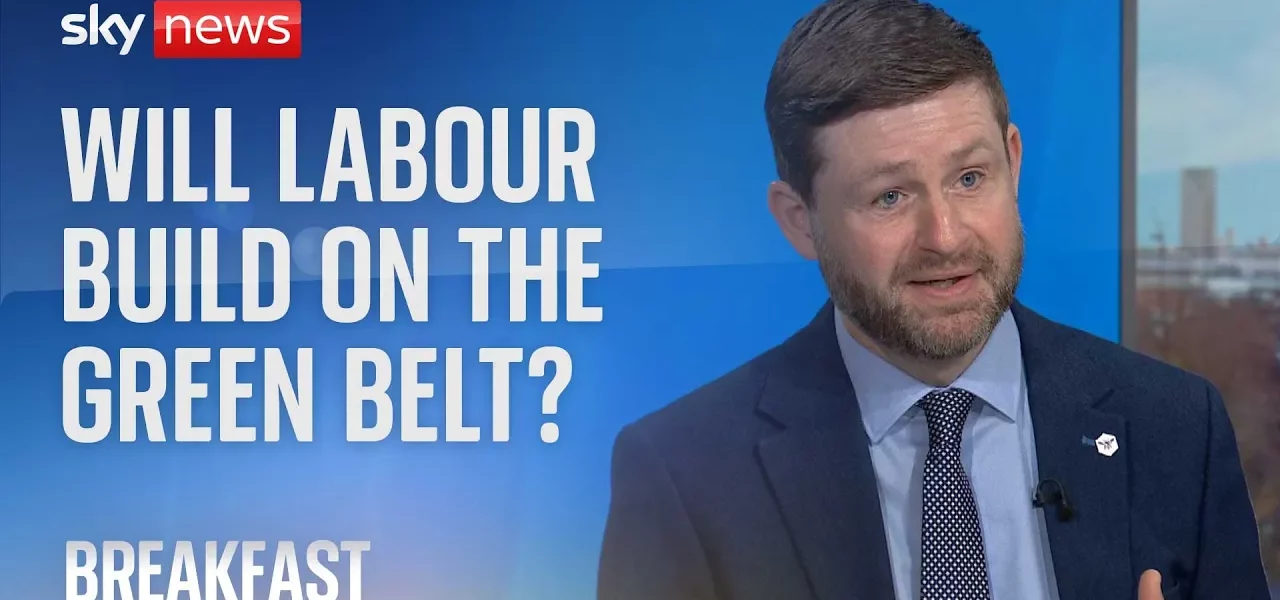Jim McMahon Discusses UK Government’s Housing Policies and Green Belt Considerations

In this article, we delve into an insightful conversation with Jim McMahon, the Minister for Levelling Up, Housing and Communities. The discussion covers critical topics such as the UK government’s ambitious plans to build new homes, the complexities surrounding the green belt, and the necessity for community energy initiatives.
Introduction
Following 14 years in opposition, Jim McMahon’s recent entry into government marks a significant shift in the UK’s housing landscape. As the Minister for Levelling Up, Housing and Communities, McMahon’s responsibilities are vast, ranging from tackling the housing crisis to enhancing community energy solutions. This article explores his perspectives on the government’s housing strategy, the role of brownfield sites, and the ongoing debate surrounding the green belt.
Government’s Housing Ambitions
The UK government has set an ambitious target to construct 1.5 million new homes throughout the current parliament. This goal aims to address the pressing housing crisis that has left many citizens struggling to secure adequate accommodation. McMahon emphasizes the importance of utilizing untapped potential in urban areas, particularly brownfield sites, which are often overlooked.
The Significance of Brownfield Sites
- Brownfield sites are previously developed lands that are not currently in use.
- Many of these sites are located in urban constituencies, making them ideal for redevelopment.
- Local communities are eager to see these areas revitalized to provide much-needed housing.
Addressing Housing Needs
McMahon highlights the urgent need for affordable housing, especially for families facing temporary accommodation challenges. He cites alarming statistics, such as 500 children living in temporary hotel accommodations in his constituency, underlining the national emergency regarding housing access.
Understanding the Green Belt
The discussion around the green belt is complex and often contentious. McMahon stresses the importance of distinguishing between the traditional scenic countryside and areas classified as green belt that may not hold the same aesthetic value.
Redefining Green Belt Areas
McMahon proposes a review of the national policy framework to clarify what constitutes green belt land. He argues that some areas currently classified as green belt are, in reality, brownfield or post-industrial sites that local communities would prefer to see developed.
Community Perspectives on Development
Local communities have a significant voice in this conversation. McMahon argues that residents often have a different perception of what should be preserved as green belt and what can be developed. He insists that local authorities should lead these discussions to identify housing needs accurately.
Engagement with Local Authorities
Collaboration with local authorities is paramount for successful housing initiatives. McMahon reiterates that local councils are best positioned to understand their community’s needs and landscapes.
Strategies for Effective Collaboration
- Work closely with developers to unlock sites with existing planning permissions.
- Focus on revitalizing brownfield sites that have been neglected.
- Engage local communities in the planning process to ensure their needs are met.
Long-term Objectives
The long-term objective is not only to meet housing targets but to ensure that these developments enhance community well-being and contribute positively to local economies.
Community Energy Initiatives
In addition to housing, McMahon discusses the government’s approach to community energy, particularly in relation to wind energy. He emphasizes the importance of creating energy solutions that benefit local communities.
The Role of GB Energy
GB Energy is envisioned as a publicly owned company that aims to provide affordable energy solutions while ensuring community involvement. McMahon believes that local energy initiatives can significantly reduce dependence on volatile global markets.
Building Acceptance for Wind Farms
While many communities express hesitance towards onshore wind farms, McMahon asserts that education and involvement in local energy decisions can foster acceptance. He mentions that community ownership of energy resources will play a critical role in changing perceptions.
Conclusion
In summary, Jim McMahon’s insights into the UK government’s housing policies and green belt considerations reveal a commitment to addressing the housing crisis while engaging local communities in the decision-making process. The initiatives aimed at revitalizing brownfield sites and promoting community energy solutions mark a progressive step forward. As the government prepares to tackle these challenges, it is crucial for stakeholders to collaborate effectively and prioritize the needs of their communities. For more information on housing policies and community initiatives, explore our related articles.
“`




